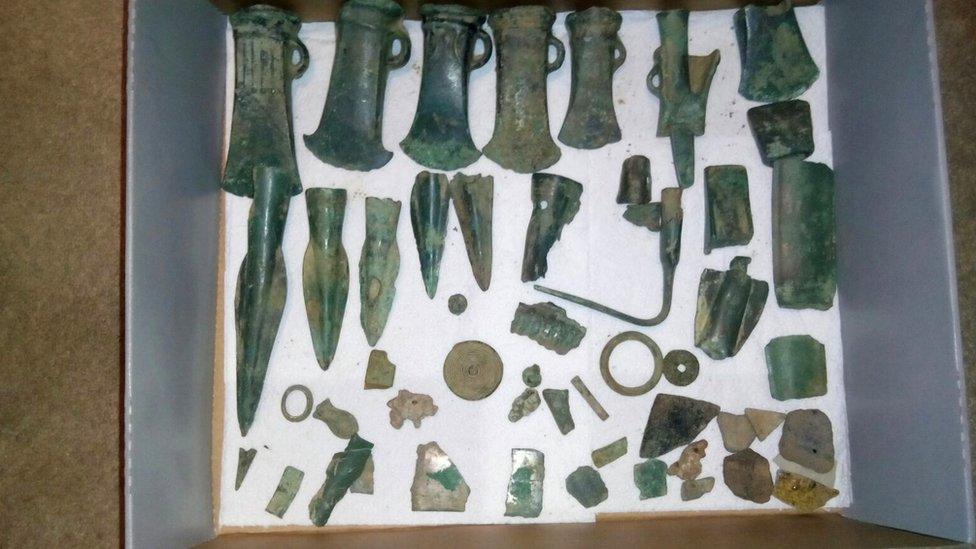Norwich timber henge burnt in Neolithic winter solstice excavated
- Published
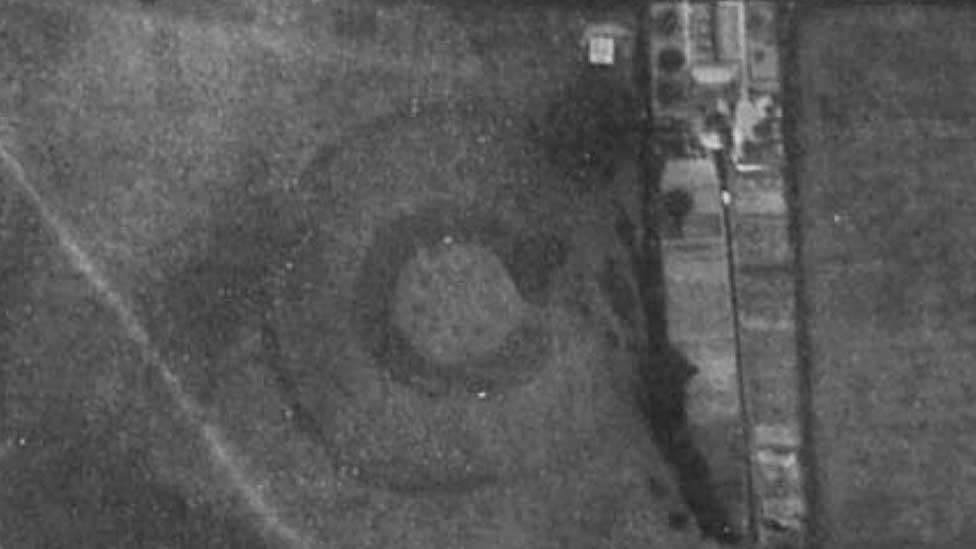
The late Neolithic to Bronze Age monument is close to many other prehistoric sites, including burial barrows and mines
A 5,000-year-old timber circle burnt down during a Neolithic midwinter solstice has been excavated for the first time since the 1930s, external.
Arminghall Henge, just outside Norwich, was discovered by a pilot in 1929 surveying for ancient monuments.
The blaze would have created "a hell of a bonfire which burnt for days", archaeologist Andy Hutcheson said.
Dr Hutcheson said following the dig they now believe it was deliberately set alight during a winter gathering.
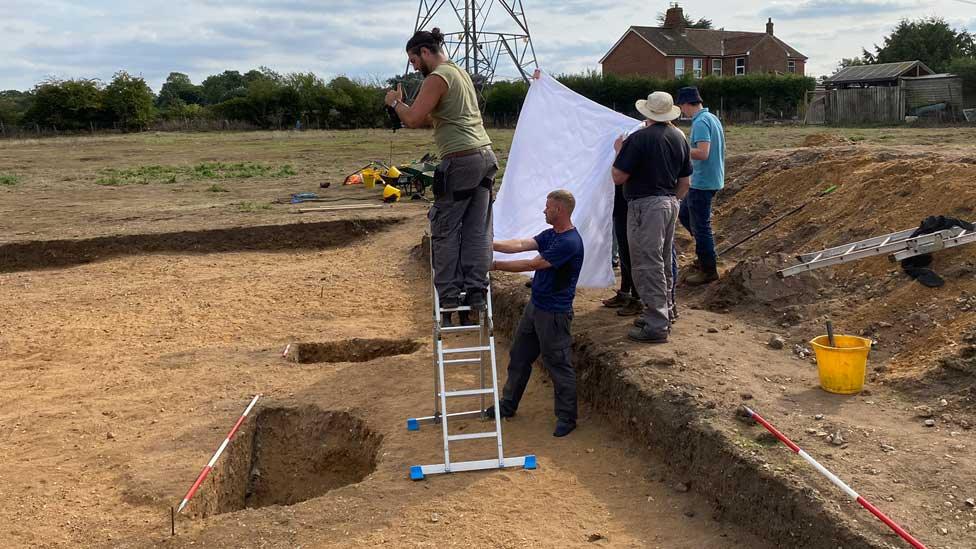
Archaeologists excavated a post hole examined 90 years ago as well as one not previously touched
Radiocarbon dating in 2010 suggested it was built between 3525BC to 2700BC.
Eight 5.5 tonne (12,124lb) posts about 1m (3ft) in diameter were sunk into the ground.
Dr Hutcheson, from the University of East Anglia's Sainsbury Institute, external, said: "They were at least 10m (32ft) above ground, so the circle would have been pretty impressive.
"A huge amount of people would have been needed to bring the timbers to the site and put them in place.
"It was also sited to take advantage of the setting sun on the midwinter solstice, like Stonehenge."
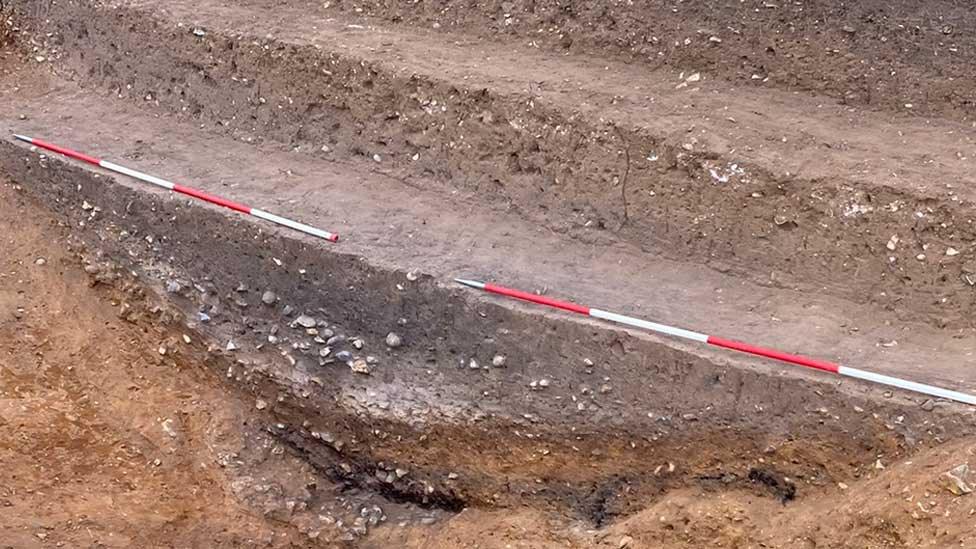
They also dug trenches in the earthworks and in both areas, like the 1930s' dig, they found a layer of charcoal from a fierce fire
Arminghall Henge was built on land above a valley where three rivers meet.
Dr Hutcheson believes it was deliberately built on raised ground, so it could be easily seen, and by a confluence of rivers for ease of access.
"Another new thing we've found is there was more of an escarpment in the past, so from the river valley the henge would have looked much more spectacular," he said.
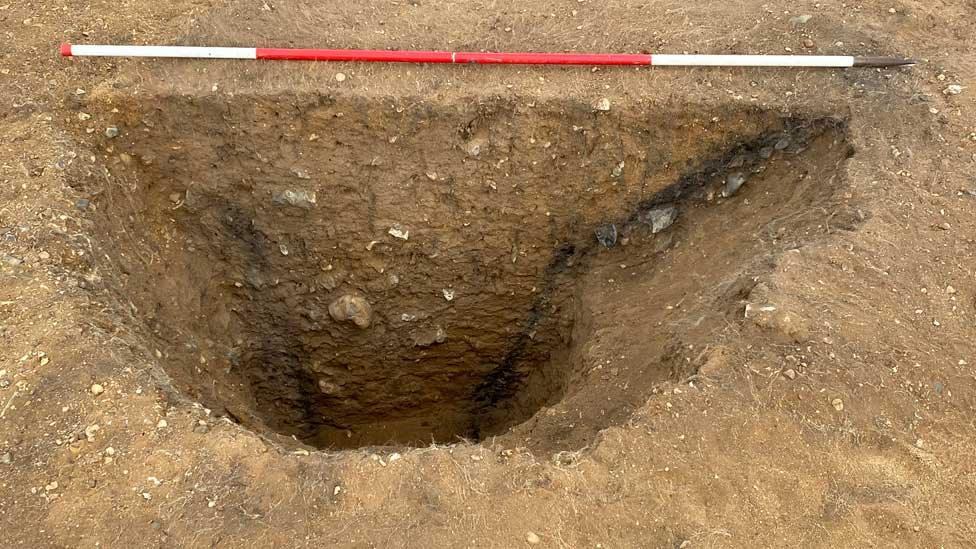
The post holes were angled to help ease the tree trunks in and they would have been pulled upright by "lots of people and lots of rope", said Dr Hutcheson
The 12m (39ft) timber circle was surrounded by a later 76m (249ft) diameter earthwork henge.
Charcoal was found in the post holes and the inner earthwork ditch's lower layers during the excavation, which was helped by volunteers from the mental health and heritage charity The Restoration Trust, external.
Dr Hutcheson said they believe the timber circle was deliberately burnt and its remains added to the earthwork monument.
"Archaeologists now think that this sort of thing was seasonal and therefore to do with the solstice," he said.
"It would have been a hell of a bonfire which burnt for days."
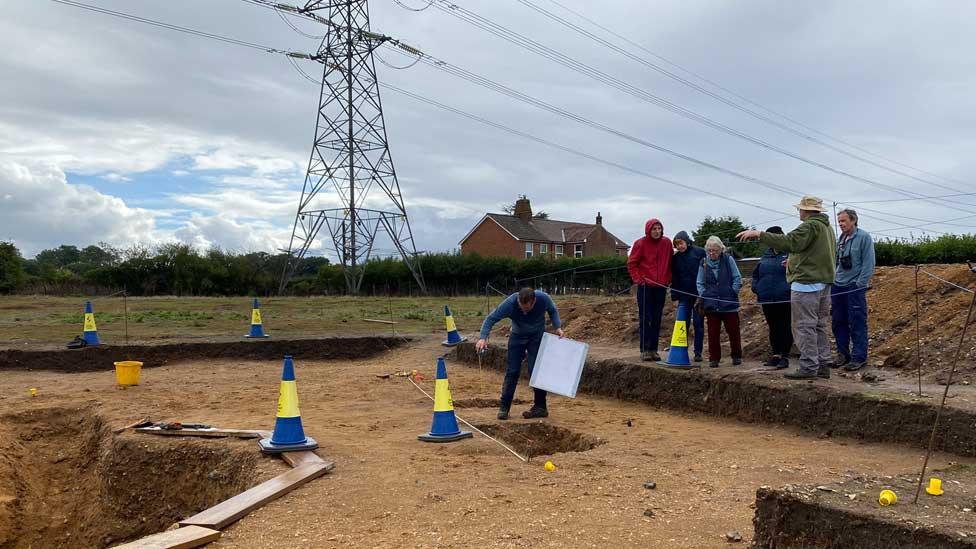
Lots of Roman debris suggests the site continued to be use for some purpose during the Romano-British period

Find BBC News: East of England on Facebook, external, Instagram, external and Twitter, external. If you have a story suggestion email eastofenglandnews@bbc.co.uk, external
Related topics
- Published30 August 2022

- Published17 August 2022
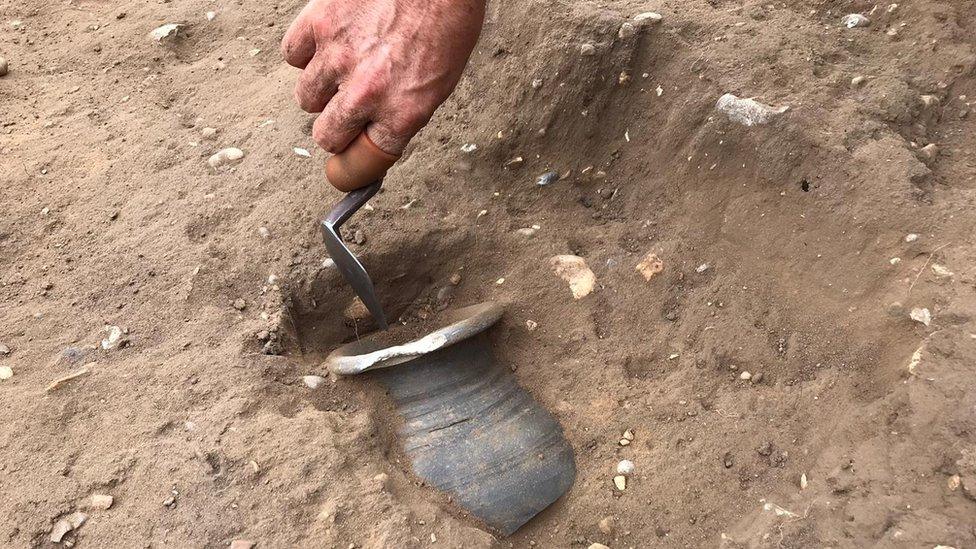
- Published1 July 2022
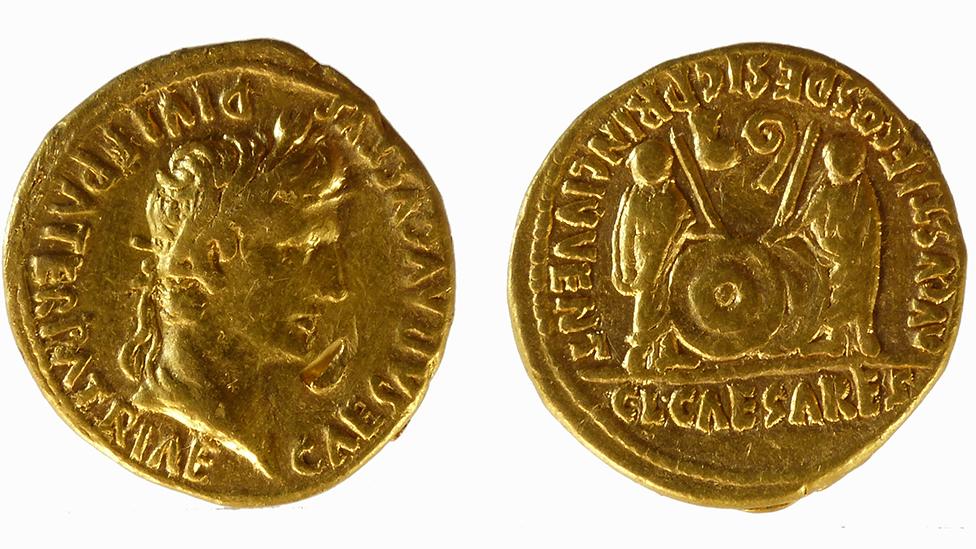
- Published16 January 2022
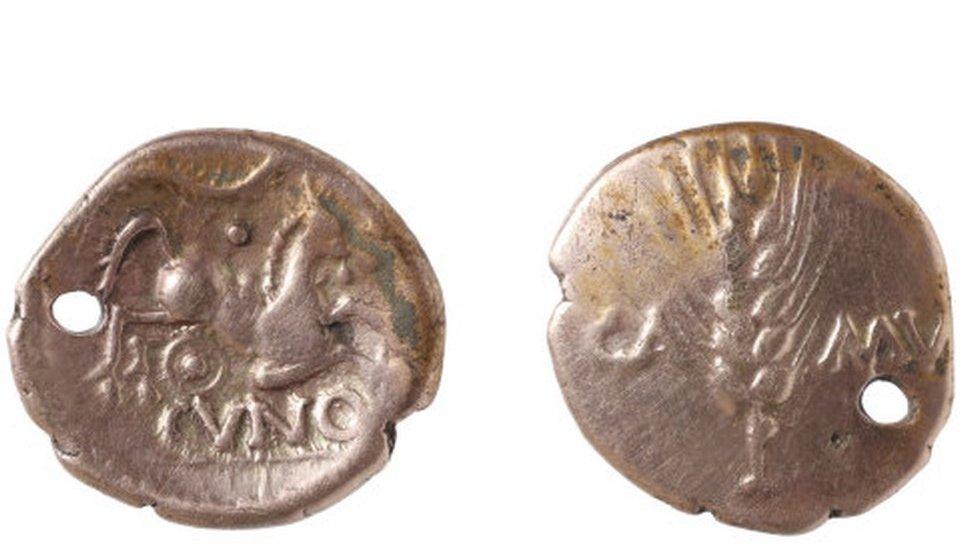
- Published14 August 2018
